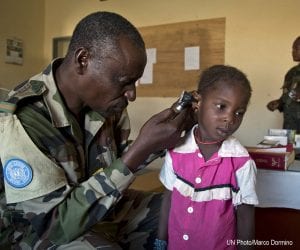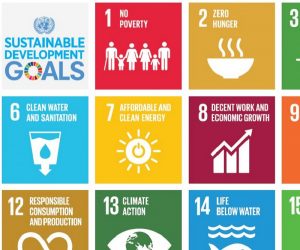Every summer Population Education is fortunate to host interns from around the U.S. These students bring their talents and passions to the PopEd program by completing a wide variety of projects. The following blog was written by one of PopEd’s 2025 summer interns.
In Mexico, the promise of education is often derailed by the harsh realities of poverty, labor demands, and deep-rooted inequality. While national enrollment in primary school is impressively high at 98.6 percent, that drops dramatically to 84.4 percent in lower secondary and just 63.9 percent in upper secondary school. Roughly 3 in 10 children drop out before finishing secondary school, a striking statistic that reflects more than just policy gaps. At the heart of educational disruption is child labor, driven by a combination of poverty, limited educational resources, and regional inequalities.
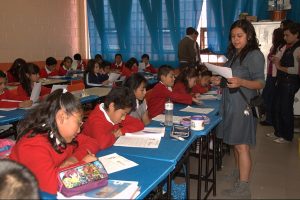
In this blog, we will focus on child labor in Mexico, but child labor is not just an issue in Latin America. There are roughly 138 million children involved in child labor globally. And while each country and community are different, a deeper look at child labor in Mexico can help spotlight the motivators and educational implications of child labor everywhere.
The Poverty Trap and the Pull of Labor
In many rural and underdeveloped regions, especially in southern Mexican states such as Guerrero, Chiapas, and Nayarit, child labor is not only common but often seen as essential for family survival. Children work in agriculture, construction, mining, and even the chemical industry. Some children work more than 48 hours per week in hazardous conditions that threaten both their physical and emotional wellbeing.
In communities where child labor is common, education is often viewed as a luxury, not a right. This is not because families don’t see the value of schooling, rather, it is a direct result of survival and family needs. For many families, the immediate income from a working child is more tangible than the uncertain future offered by a school system that is often underfunded, inconsistent in quality, and at times unsafe due to peer violence. Though Mexican law mandates school attendance for children under 14, enforcement is weak in regions where economic pressures outweigh long-term aspirations.
Geographic and Structural Inequities
Mexico’s education system is marked by deep regional inequalities. Urban centers and wealthy states like Mexico City, Baja California, and Coahuila de Zaragoza tend to have lower child labor rates and higher school attendance. Meanwhile, rural and indigenous communities continue to face persistent challenges such as inadequate infrastructure, long and often dangerous commutes to school, under-resourced schools, and unsafe learning environments.
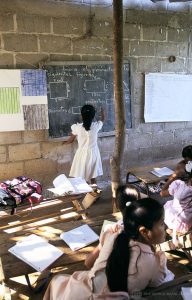
Moreover, educational gender disparities persist. Girls often bear the double burden of managing household responsibilities while also participating in informal labor, which significantly reduces their chances of staying in school. While drop out and attendance rates remain similar for both boys and girls in Mexico, gender differences often impact why boys and girls choose to drop out. Additionally, while girls in Mexico tend to achieve higher levels of education, this is frequently unnoticed with women’s level of education repeatedly being undervalued and unrecognized in Mexico.
Migration and the Illusion of Opportunity
The disruption of education doesn’t end at Mexico’s borders. Many children and teens endure the journey to the United States in pursuit of what some call the “Mexican dream,” where they can provide for their family and succeed financially. However, this journey for Mexican child migrants often becomes a new chapter of exploitation. Upon arrival in the U.S., many young migrants are trapped in illegal or exploitative labor, further distancing them from educational opportunities and leaving them unprotected by labor or immigration laws.
A survey of Mexican teens who immigrated to the U.S. revealed that many of them wanted to go to school but could not access the U.S. education system due to language barriers, lack of documentation, and hectic work schedules. Many of them found themselves stuck in the U.S. with not enough money to return home but, simultaneously, unable to get ahead in the U.S.
Hope Through Policy and Social Programs
Despite the challenges, there have been promising steps toward progress. Programs like Prospera, Mexico’s former social protection and education initiative, aim to reduce poverty, promote education, and support school attendance among low-income families by offering financial aid. Through Prospera, families were also required to attend workshops on topics such as sex education and family planning. In an interview conducted by Al Jazeera, Reinalda, a single mother in Mexico, credited her daughter’s educational success to Prospera by easing the family’s financial burden. While the Prospera program was cut in 2019, its funding was reallocated to the Benito Juarez Scholarship Fund, which provides a grant to all teenagers pursuing an upper secondary education.
More recently, the 2023 amendments to child labor laws signal a growing recognition of the need to protect Mexico’s youth and address systemic causes of dropout rates. However, policy alone isn’t enough. Without addressing the intersections of poverty, inequality, and gender disparities, efforts to reduce child labor and improve educational outcomes will remain fragmented and insufficient.
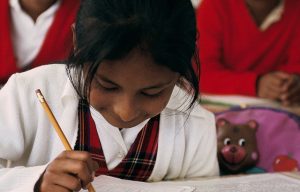
Child Labor and Population Growth
Building a more equitable and stable Mexico requires a comprehensive approach that protects children, strengthens education systems, and invests in vulnerable communities. The fight against child labor is not just a human rights concern but also has serious implications for societal and environmental structures.
When focusing on large scale issues such as child labor, especially in underdeveloped regions and countries, looking at the connection with population growth is crucial. Population growth and child labor share root causes. Limited economic opportunity, inadequate education systems, and systemic inequality fuel both issues, and their entanglement makes it much harder to address and break the recurring cycles of poverty. And this isn’t just a challenge in Mexico. There are places all over the globe – from sub-Saharan Africa to the Middle East to regions in South Asia – where the struggle with child labor continues.
When children are pushed into the workforce, they are taken away from classrooms and all the learning and inspiration is found there. This not only jeopardizes their future prospects; it traps communities in generational cycles of poverty and weakens their resilience to economic and societal challenges.
Image credits: Teacher addressing class (Monterrey Institute of Technology and Higher Education, Mexico City , CC BY-SA 3.0, via Wikimedia Commons); Rural classroom (MX026S04 World Bank – Curt Carnemark by World Bank Photo Collection is licensed under CC BY-NC-ND 2.0); Female student (Girl in a classroom – Curt Carnemark by World Bank Photo Collection is licensed under CC BY-NC-ND 2.0)



